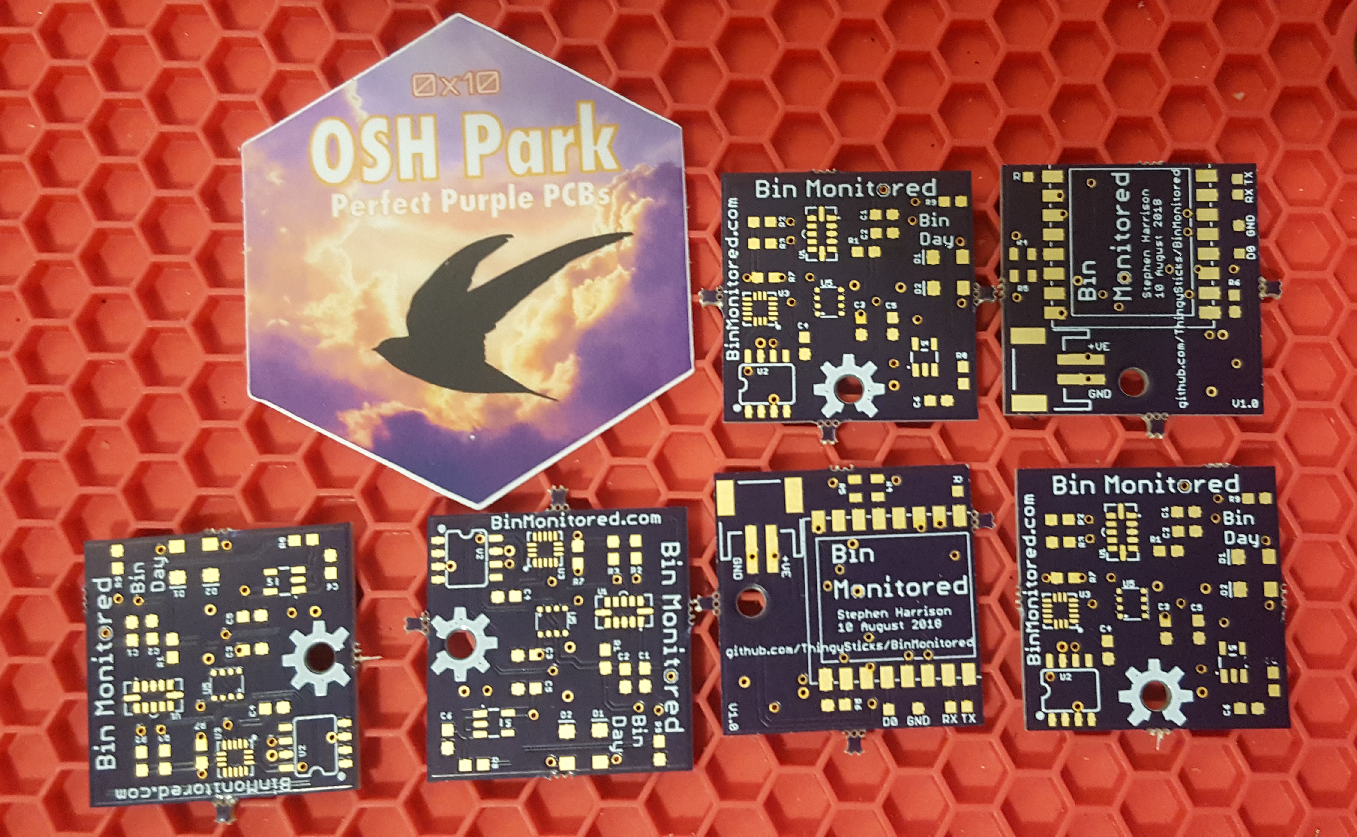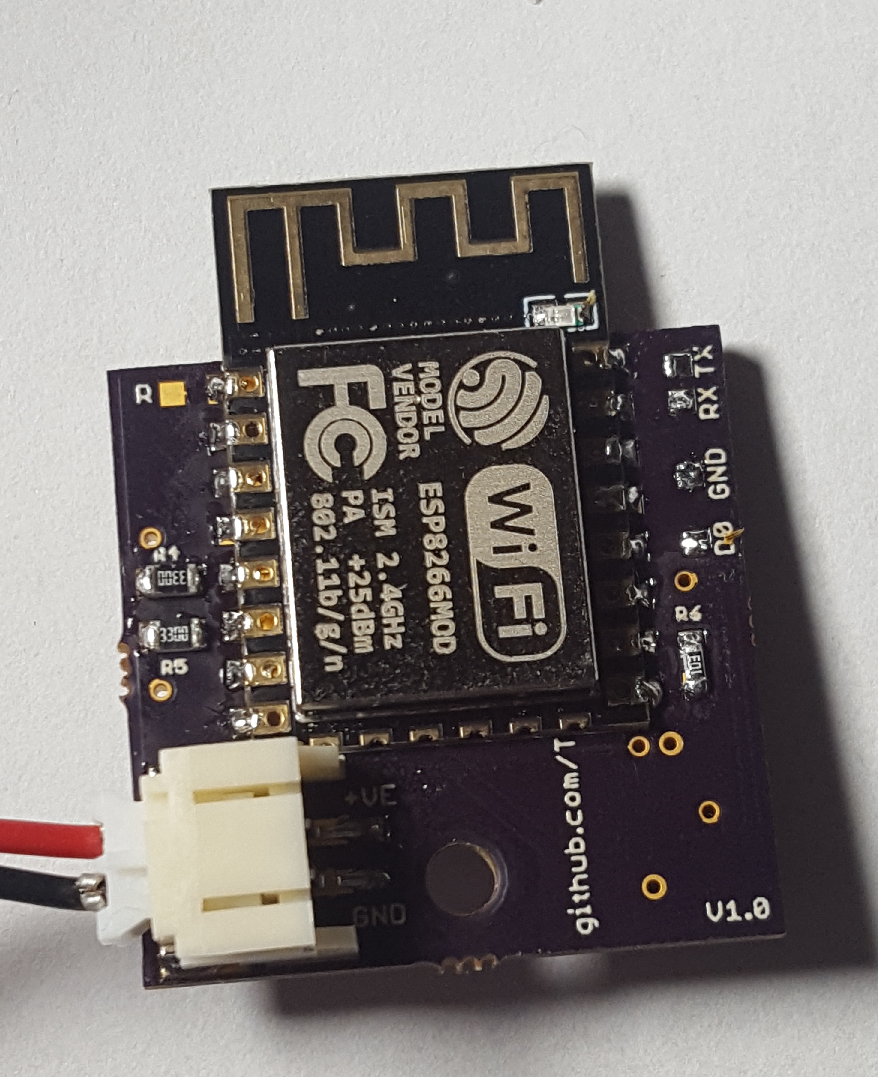The Bin Monitored system is intended to be self contained and mounted on the inside of a wheelie bin lid. It should be easily removable so it can be removed before rubbish collection, hopefully preventing the possible loss of the unit.
- It has Internet connectivity via onboard WiFi through an ESP-12.
- If the lid is opened it can notify you in case a parcel has been left in the bin, or somebody is putting their rubbish in your bin.
- It can measure how full the bin is using an Infra Red TOF laser sensor.
- On a windy day, it can notify you if the bin has fallen over, hopefully being rescued before the contests are all down the street.
- It can measure environmental conditions, and if in a sealed case, warn of moisture ingress.
- EEPROM memory allows detailed logging of environmental conditions if required.
- A volatile organic compound sensor could warn of rubbish being placed in the bin that isn't permitted (i.e. paint in a recycling bin).
- It is designed to have air flow around it, whilst also protecting the PCB from water during cleaning of the bin.
- Low power consumption (being in deep sleep mode most of the time and only transmitting via WiFi when needed) for long life battery power.
- LED indicators can be used to indicate if the bin needs to be taken out for collection. (i.e. open the lid and the "Bin Day" LED will light if the bin is due for collection).
 Stephen Harrison
Stephen Harrison



























 Kris Winer
Kris Winer
 electrobob
electrobob
 k
k
 Ulf Winberg
Ulf Winberg
Very nice! I didn't know about your project until now. I started down this path myself a while ago with a few differences. Here is my latest bin level monitoring project on Hackaday.io: https://hackaday.io/project/164160-bin-level-monitoring.
I am using LoRa/LoRaWAN and the VL53L0 instead of the L1. But otherwise same idea. In a prototype form I measured 40 uA average current with a 10 minute LoRaWAN Tx duty cycle and 1 minute sensor read intervals. See this entry: https://www.thethingsnetwork.org/forum/t/bin-level-monitoring/13359.
Keep up the good work!